
Pittsburgh architect Victor A. Rigaumont designed dozens of movie houses, large and small, all over the Northeast. Most of them are gone, but a few remain, and this is one of them. It’s still open and still showing movies on a single screen.
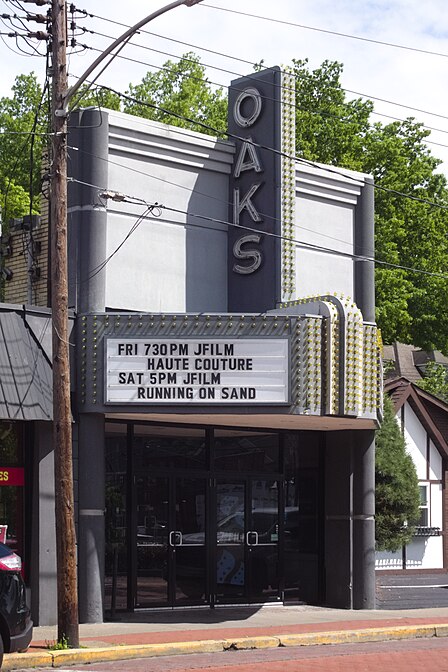

Pittsburgh architect Victor A. Rigaumont designed dozens of movie houses, large and small, all over the Northeast. Most of them are gone, but a few remain, and this is one of them. It’s still open and still showing movies on a single screen.


Almost all the decorative effect of this building is achieved by arranging bricks in different ways. The original windows in the upper floors also have a part to play in the rhythm of the design: it would not be nearly as effective if they were replaced with single panes of plate glass.



A streamlined industrial building on North Avenue. We suspect that the part now filled in with red diamonds may have originally been a storefront or showroom for the business.



The County Office Building, which opened in 1931, was designed by Stanley L. Roush, who was the king of public works in Allegheny County for a while. Its combination of styles is unique in Pittsburgh, as far as old Pa Pitt knows. In form it is of the school Father Pitt likes to call American Fascist, the weighty classical style filtered through streamlined Art Deco that was popular for American public buildings between the World Wars, and of which the grandest example in Pittsburgh is the federal courthouse. But the details are Romanesque rather than classical—an acknowledgment of the lingering influence of the great Richardson’s greatest masterpiece, the Allegheny County Courthouse. The carved ornaments are Art Deco adaptations of medieval themes, except for the eagle above, which is not at all medieval, and which clasps the arms of Allegheny County in its talons.

The Fourth Avenue side. The County Office Building is roughly square, so the four sides are similar, except that this side lacks an entrance. But this was the side that was lit by the sun when Father Pitt was taking pictures. It took a lot of fiddling and adaptation to get the whole side of the building across a tiny narrow street, so you will see stitching errors and other anomalies if you enlarge the picture.

An Art Deco gargoyle.










The Law & Finance Building was a rather old-fashioned skyscraper when it went up in 1927–1928. It was designed by Philip Jullien of Washington (D. C., where he wasn’t allowed to design skyscrapers, owing to city height limits that are still uniquely in place) in the base-shaft-cap formula typical of the early age of skyscrapers. It even has the regulation bosses’ floor above the base.

What is unique is the row of ornamental heads above the bosses’ floor, perhaps representing the severed heads of the developer’s political opponents.
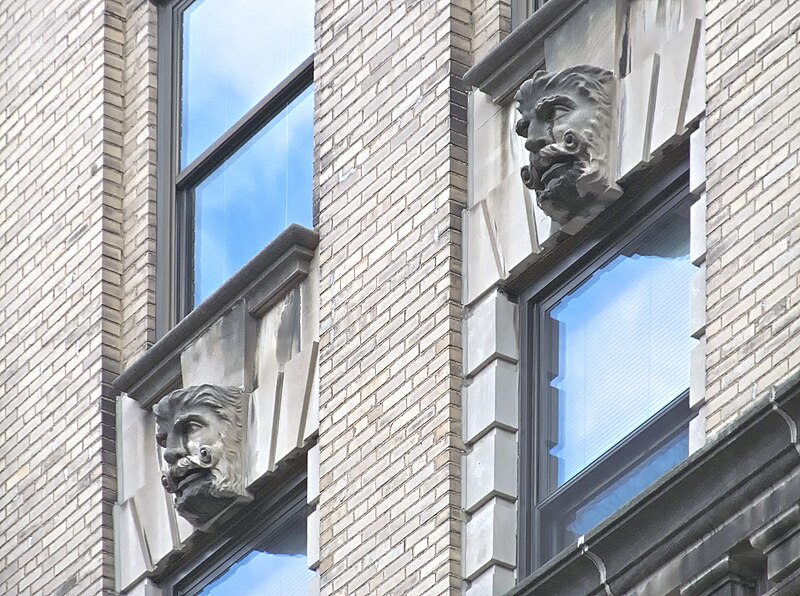


This building, in a Deco Gothic style, appears to have been part of the Western Theological Seminary, and perhaps an expert in Allegheny West history can shed some light on it. Old Pa Pitt published a picture of it once before, but recently he noticed the concrete flaking away from the obliterated date stones by the door.


This is the stone to the right of the door. The date was purposely obliterated (why do people do that?), but it is clearly legible now through the later layer of concrete: 1933, which, judging by the architectural style, would be just right for the date of the building itself.
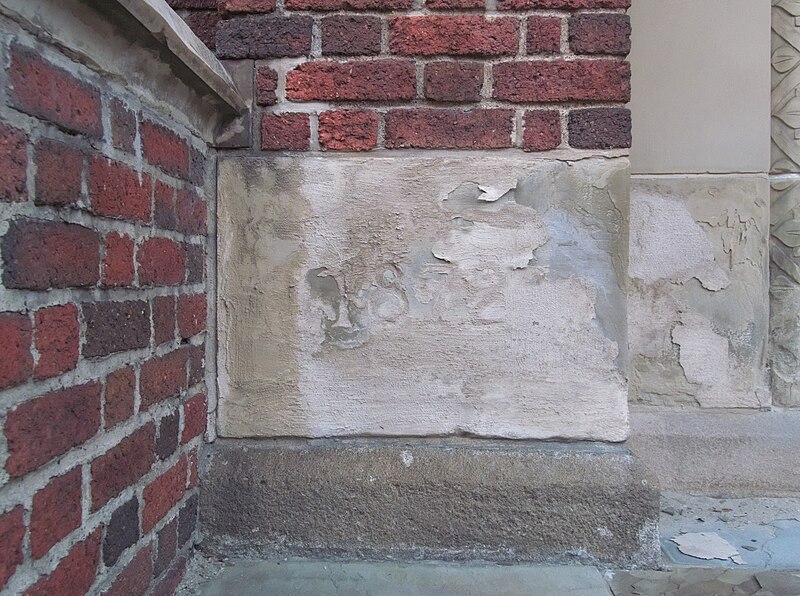
The stone to the left of the door bore the date 1872, and Father Pitt must admit to being ignorant of its significance. It is not one of the various dates usually claimed as the foundation of the Western Theological Seminary, which in 1884 claimed to have been founded in 1825. Perhaps a historian from its successor, the Pittsburgh Theological Seminary, can enlighten us.

This floral ornamentation is carved in the stone that frames the main entrance.

This building originally housed a bank, and was still a PNC branch until a few years ago. It was built in 1926, and it straddles the line between classical and Art Deco.
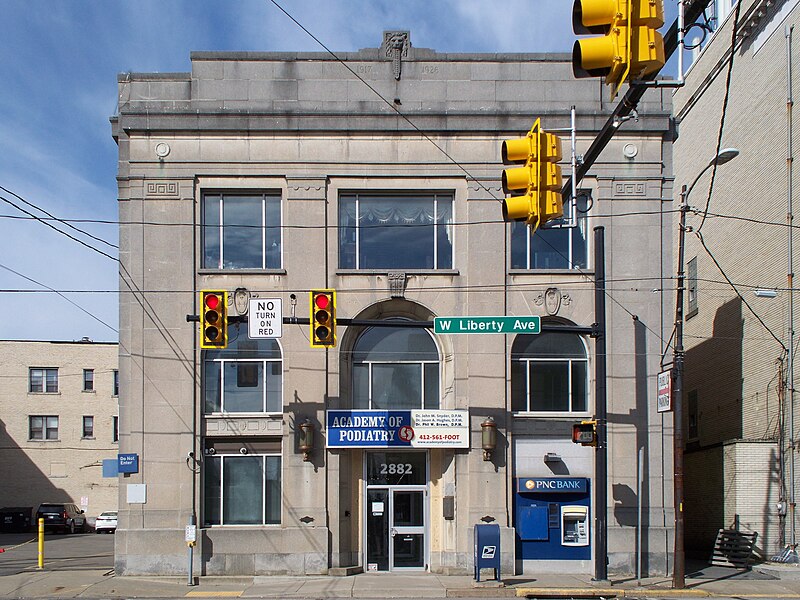
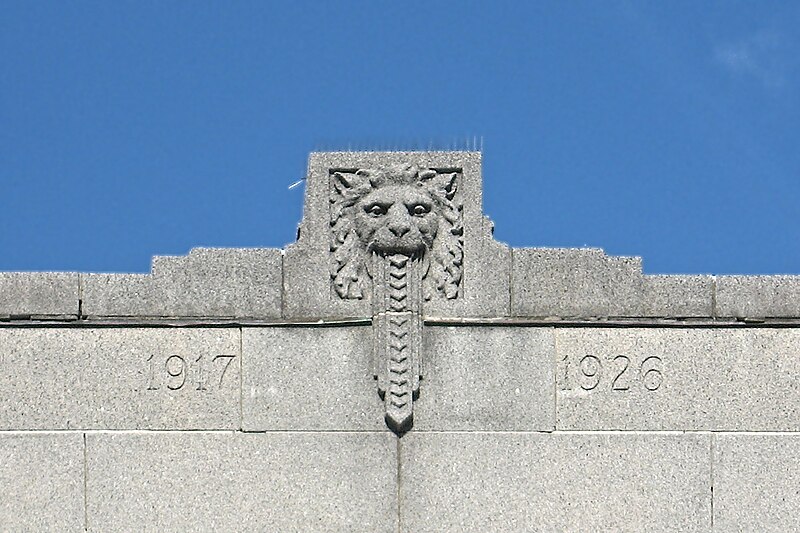
You know it’s a bank because it has a vomiting lion at the top of the building.

As with many banks, the elaborate stone front hides a building mostly clad in cheaper and more prosaic brick.

Mission Hills in Mount Lebanon, laid out in 1921, is a neighborhood where houses in all different styles coexist happily. Most of those styles are historical or romantic; this ultramodern house is a definite outlier, and an unexpected treasure in a neighborhood full of treasures. Father Pitt does not know the architect, but because of the striking similarities between this house and one in Swan Acres attributed to Joseph Hoover, we shall tentatively assign this one to Hoover as well. (And old Pa Pitt promises to get to Swan Acres soon and bring back some pictures of that remarkable neighborhood.)

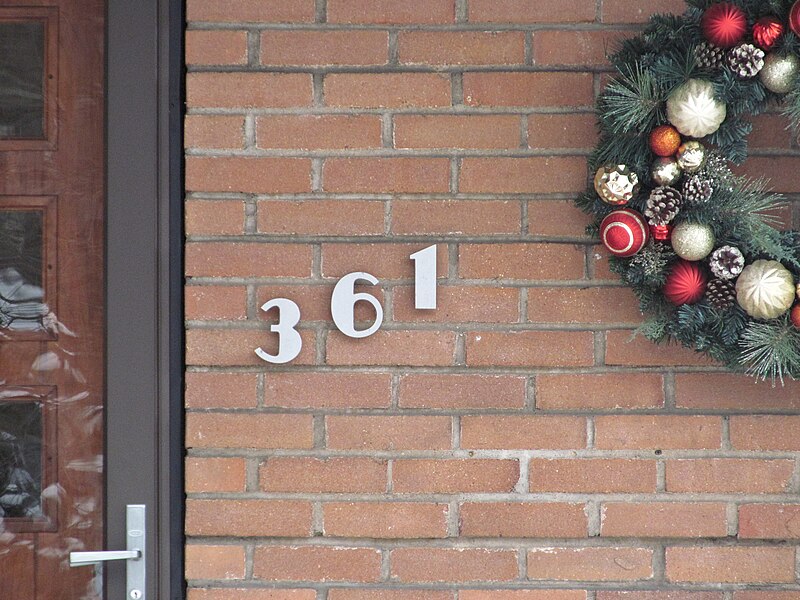
Could the house number be more perfectly styled to match the house?

And is that a genuine Kool Vent awning over the side door?